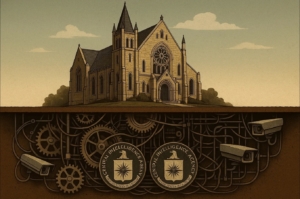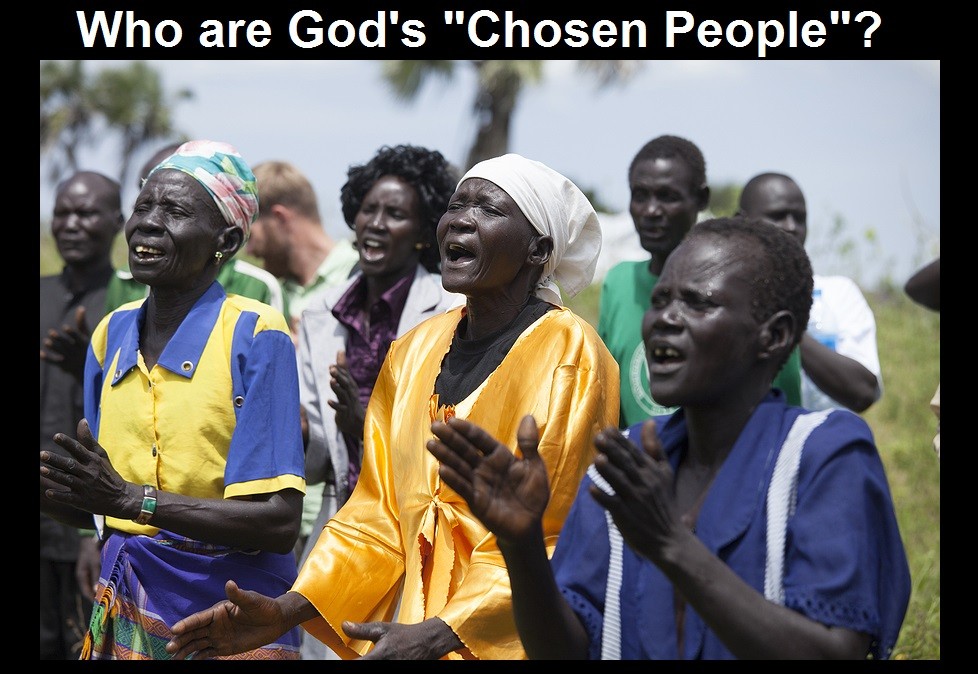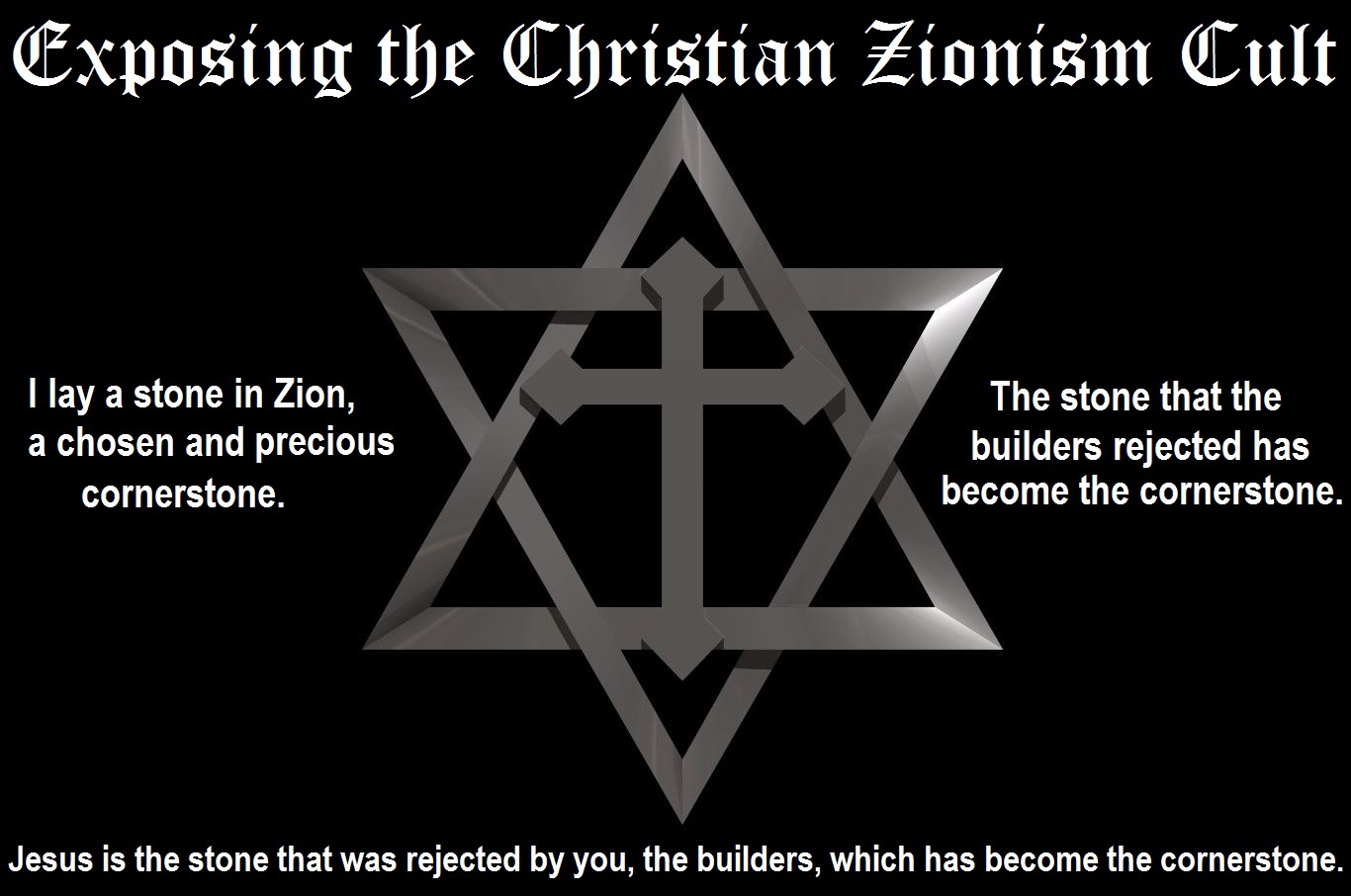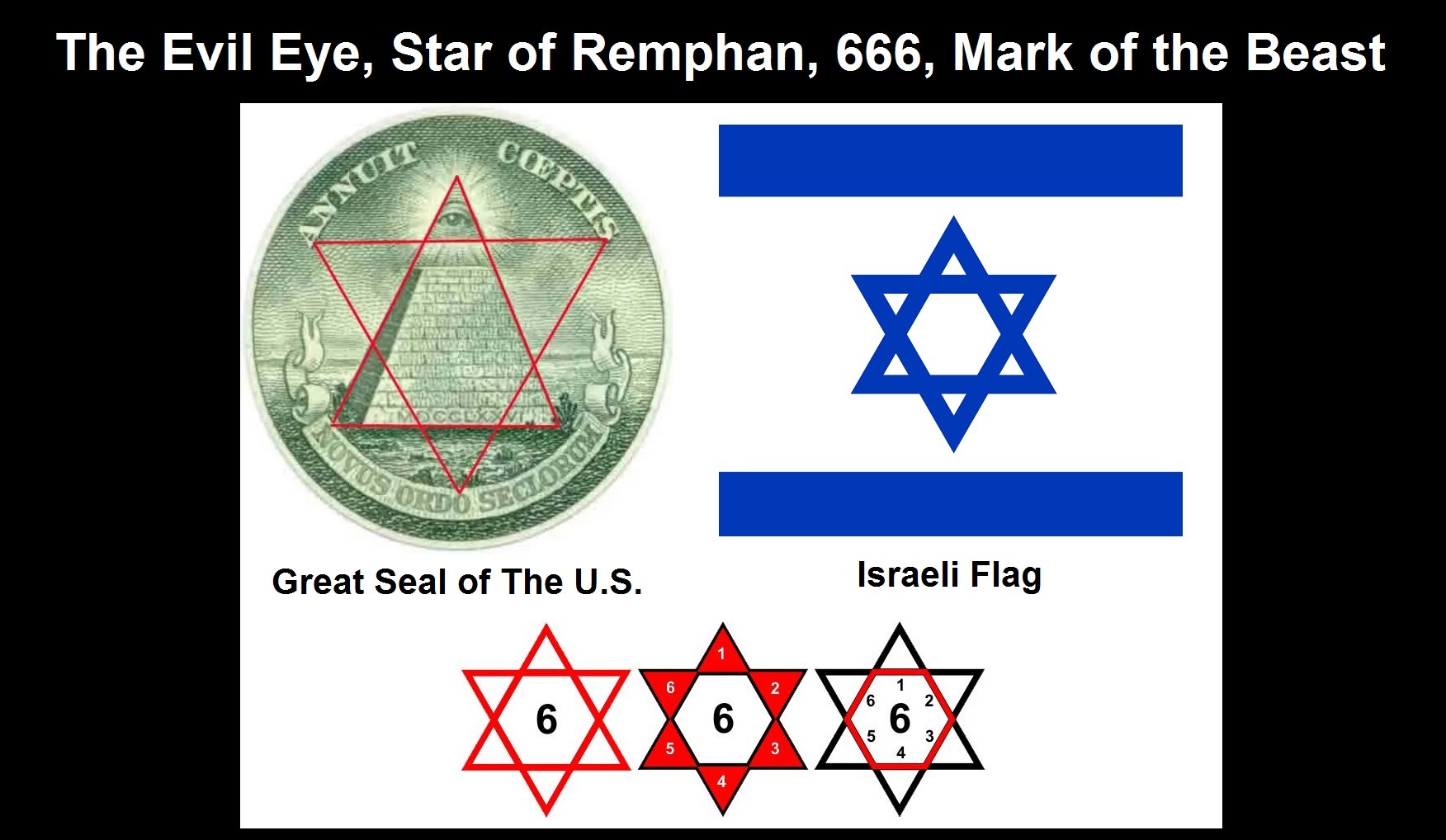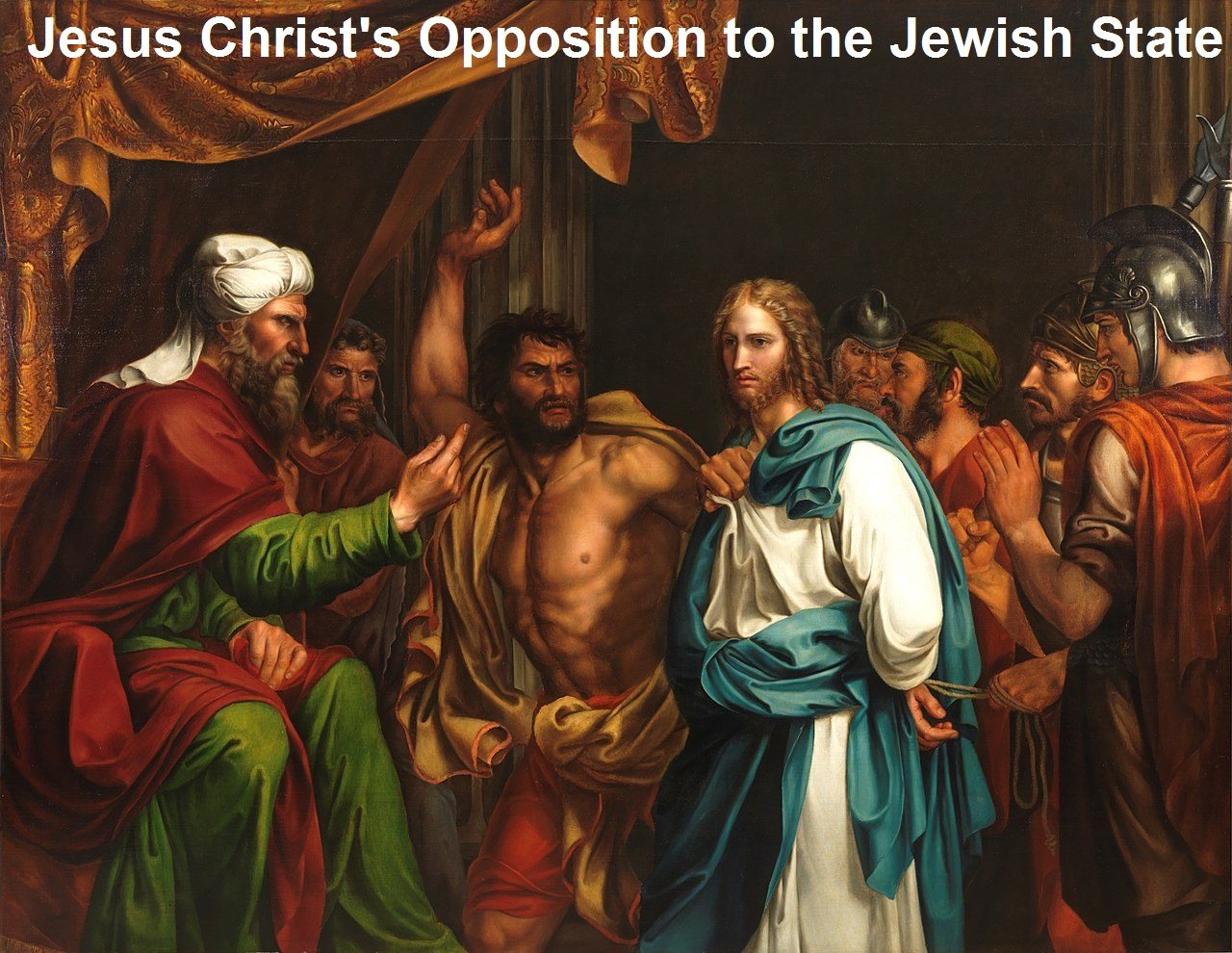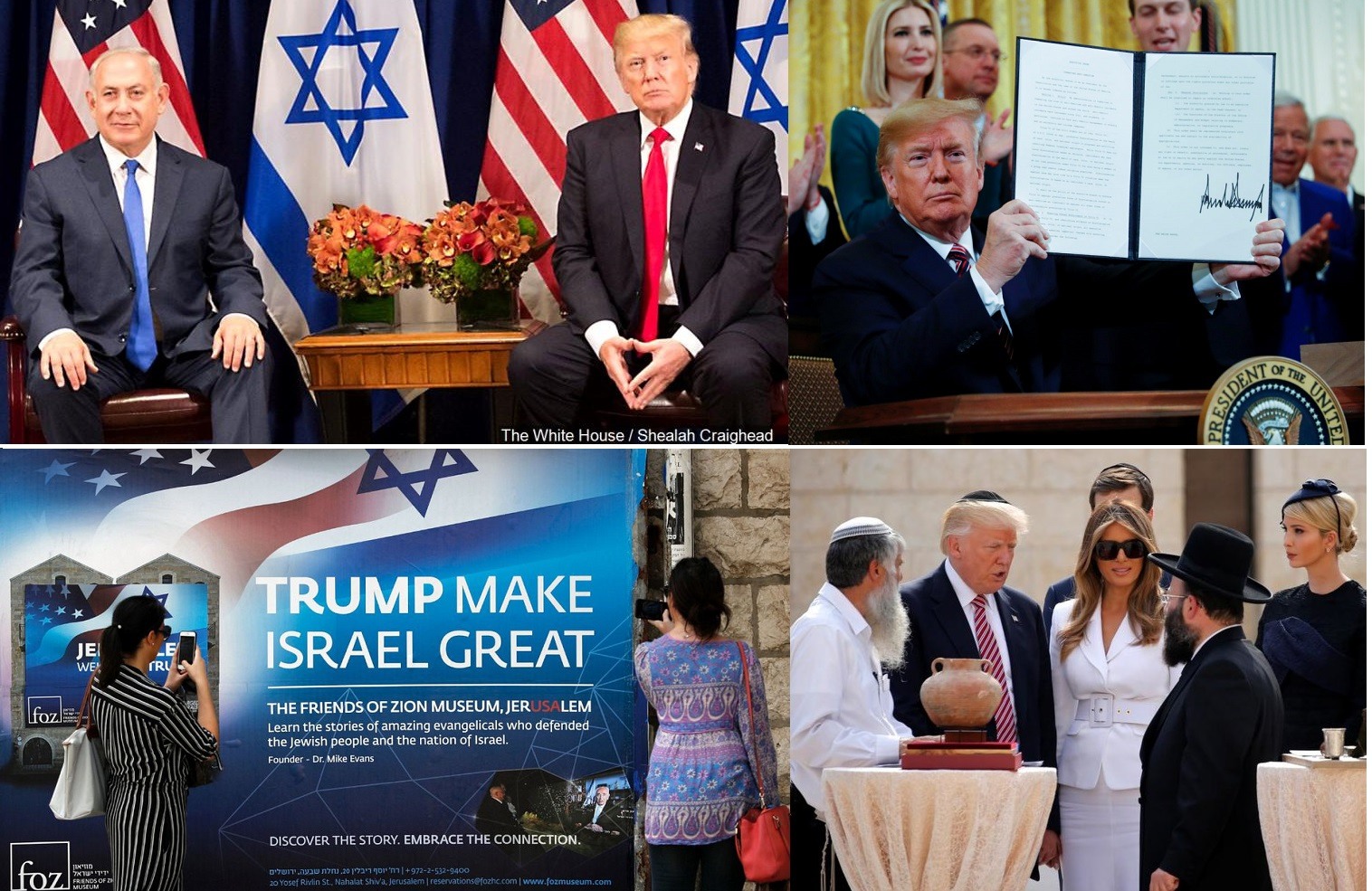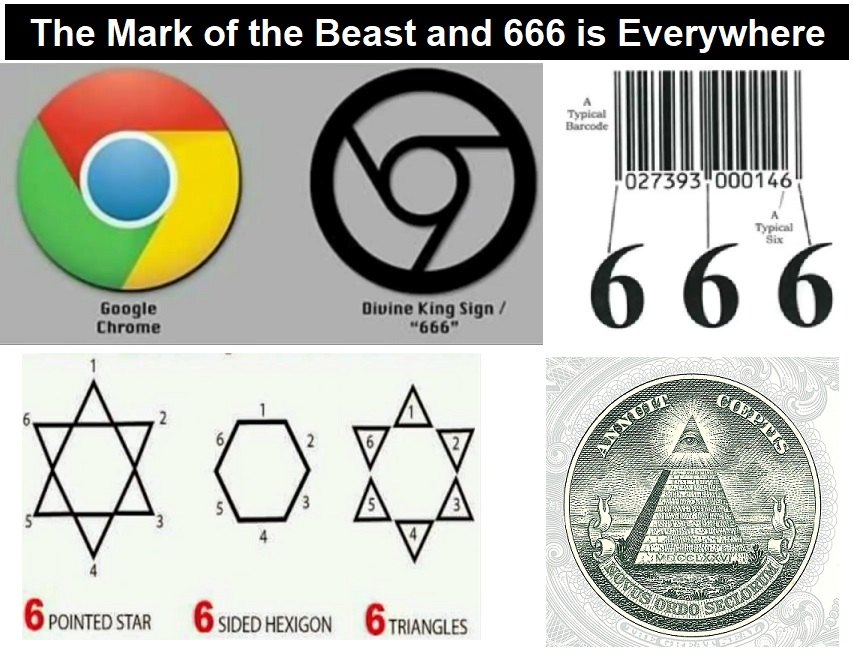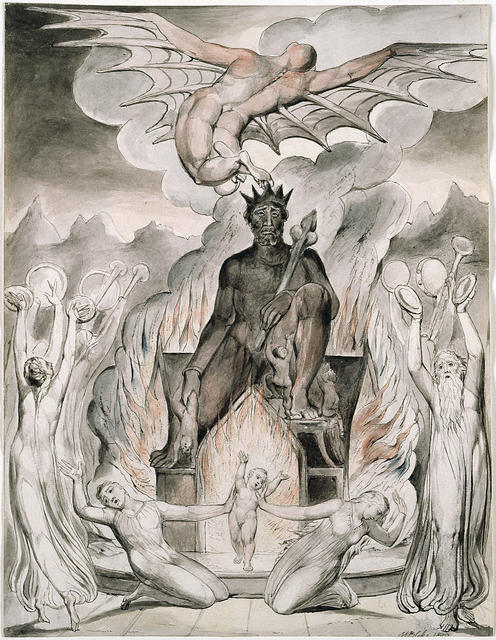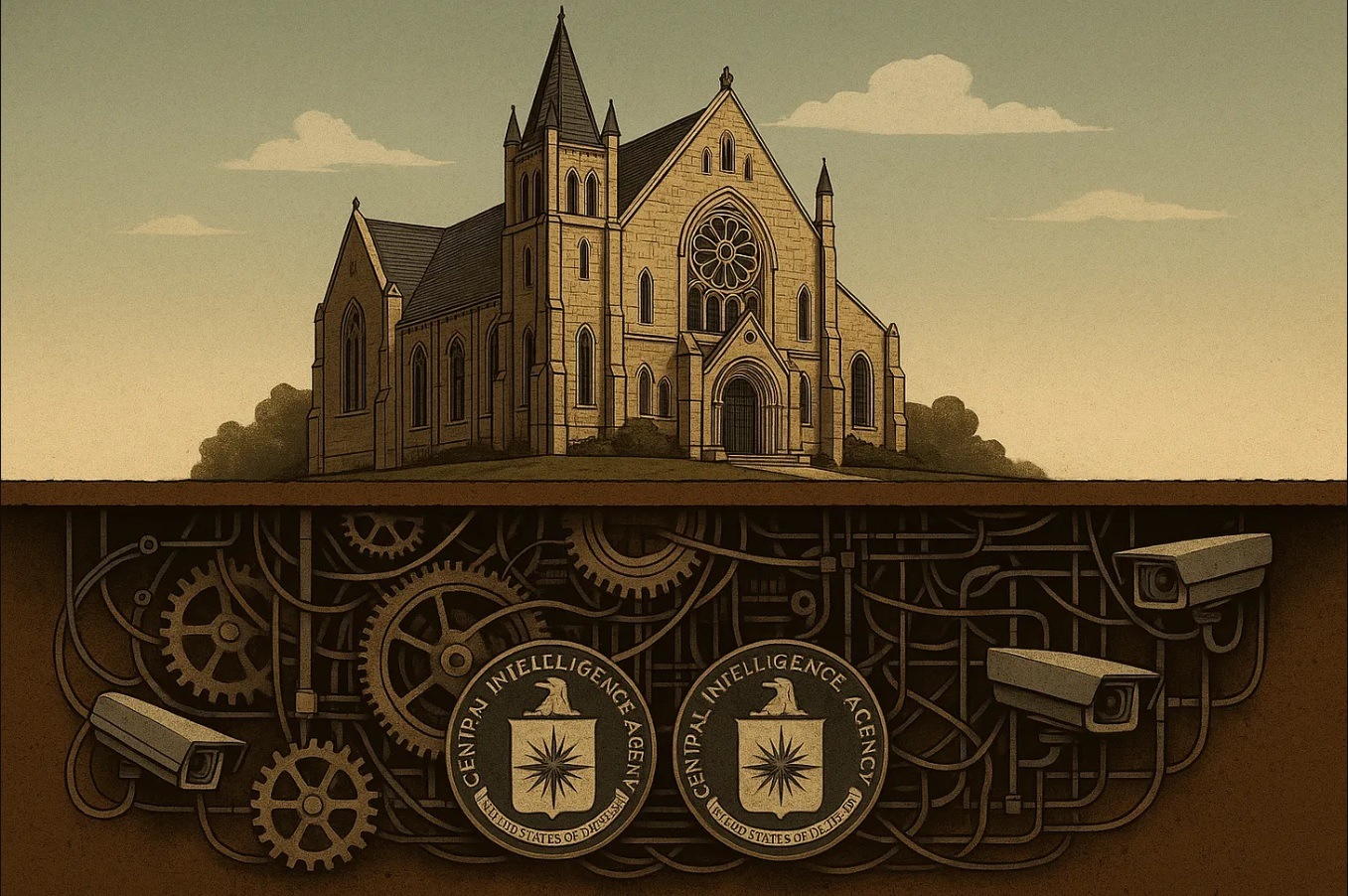
Comments by Brian Shilhavy
Editor, Health Impact News
I recently came across the writings of JD Hall, who has an active Substack Page [1] that I encourage everyone to follow.
It is rare, extremely rare, to find a writer as talented as JD who has no problem in counting the cost of criticizing American Christianity for the sake of exposing The Truth.
This is a re-publication of one of his recent articles, that he graciously allowed us to add to the collection of writings here at Health Impact News and Created4Health.org.
I can vouch for the veracity of what he presents here in Corporate Christianity, as I have experienced much of this myself over the course of the 45 years I have studied the Bible and walked together with Jesus.
Thank you JD for your dedication to The Truth! I am sure it has been a difficult and lonely path to travel on, but it is one all true believers are called to follow.
Langley to Lausanne: How U.S. Intelligence Engineered a Globalist Christianity
The CIA has infiltrated the American Evangelical Industrial Complex, embedded in our churches, and taken over our missions.
by JD Hall
Insight to Incite [2]
It is no longer a question of whether the CIA has influenced the American Church. The real questions are how deeply, how early, and how much damage they’ve done.
While most Christians were wringing their hands over communists under the bed, the actual subversion was standing behind the pulpit, wearing a tie, rehearsing a script he didn’t even know had been written by a spook. The American sanctuary has become a crime scene, and the fingerprints on the torch that set it ablaze match Langley.
This is not satire. It is not wild speculation. It is not a “what if.”
This is documented history, hiding in plain sight. And it doesn’t start in the Vatican archives or a smokey Masonic lodge. It starts in post-war Washington, where well-fed men in tailored suits realized they needed something stronger than bombs or ballots to win the world. They needed belief. They needed God.
But they needed Him to carry a flag, salute the Pentagon, and keep quiet during election season.
MOCKINGBIRD SINGS HALLELUJAH
In the 1950s, the CIA launched Operation Mockingbird, a full-spectrum information warfare program designed to control every major American media channel. Anchormen, novelists, magazine editors, journalists, and even screenwriters were on the payroll. More than four hundred of them were quietly assisting intelligence operations by shaping public opinion.
And yet we are told to believe the one sector they left untouched was the pulpit?
The CIA didn’t just approve of religion. It saw its potential. And it moved quickly to exploit it.
In a Cold War world where communism was proudly godless, the United States needed a spiritual identity. American freedom had to be baptized. National loyalty needed a theological halo.
So the suits went to work. They funded clergy conferences, subsidized missionary networks, financed seminary departments, and underwrote Bible publication projects. They didn’t need to rewrite the creeds. They only needed to bend the tone. They wanted a Christ who was polite. A Jesus who loved democracy, hated confrontation, and believed in well-regulated free markets
Best of all, they didn’t need to turn pastors into spies. They only needed to offer grants, boost careers, and throw in a few overseas trips to soften the edge. Most preachers never knew they were being manipulated. They thought they were serving God. In reality, they were helping secure America’s global footprint with a spiritual smile.
BILLY GRAHAM: THE GOLDEN-HAIRED GODSEND
Enter Billy Graham. With movie-star looks, southern charm, and global reach, he became the unofficial pastor of the American Empire.
But why him? What made him, among all the evangelists in post-war America, the chosen vessel of mainstream respectability?
The answer is simple. He was safe.
Billy didn’t thunder against the military-industrial complex. He didn’t speak out against CIA war crimes or American corporate overreach. His message was stripped of prophetic fire and filled instead with patriotic polish. He preached conversion but never repentance from systemic evil. He offered hope but not confrontation. He made Christianity look good in a suit and easy to digest in a televised format.
It is no accident that Billy Graham had access to the inner circles of nearly every American president from Truman to Bush. What should raise more eyebrows is that in 1982, while Soviet believers were still worshiping in secret and being tortured in labor camps, Billy was preaching freely in Moscow with full Communist approval. He praised Soviet religious freedom, shook hands with the regime, and declared the visit a success.
Underground pastors saw this as betrayal. Dissidents were furious. But Billy was doing exactly what Langley wanted. He was presenting American religion as apolitical, optimistic, and friendly to power.
To be clear, Billy Graham was not a CIA agent. He didn’t have to be. He was something more valuable. He was a prototype. He showed the ruling class what kind of Christianity they could tolerate. He showed the Deep State how to make Jesus sound like a suburban gentleman who votes, smiles, and doesn’t raise his voice.
OCKENGA AND THE SEMINARY FACTORY
While Billy was preaching revivals, Harold Ockenga was building the theological infrastructure. Ockenga, architect of Fuller Theological Seminary, was determined to craft a Christianity that was scholarly, winsome, and compatible with Cold War politics. He wanted evangelicalism to be respectable in elite circles and useful to the American project abroad.
Guess who paid for it?
Fuller’s early funding came from the Rockefeller Foundation, the Ford Foundation, and the Lilly Endowment. These same groups were simultaneously funneling money into CIA cutouts and foreign regime change programs. They did not invest in Fuller because they loved the Gospel. They funded Fuller because they understood its value as a tool of soft power.
Fuller was not a seminary in the traditional sense. It was a religious think tank dressed in evangelical garb. Its theology was gently filtered through globalist priorities. It steered students away from cultural confrontation and toward psychological accommodation. It helped rebrand Christianity as a therapeutic, non-threatening force in society.
And when those students graduated and filled pulpits across the nation, they brought that same filtered faith to the masses. They didn’t need to be bribed. They didn’t even need to be aware. The conditioning had already happened in the classroom.
By the time Ockenga’s experiment reached full maturity, evangelicalism was no longer a resistance movement. It was an armrest for American Empire. The salt had lost its savor. But it sure looked good on television.
MISSIONARIES, MAPS, AND THE MEN WHO KNEW TOO MUCH
In the jungles of Vietnam and the mountains of Nicaragua, missionaries preached the Gospel. But some of them, without ever realizing it, were also collecting data. The CIA had long understood the value of missionary networks. They had access to remote areas. They could travel with fewer restrictions. And they asked questions that locals were willing to answer.
Groups like Campus Crusade for Christ, Wycliffe Bible Translators, and even certain SBC missions became tools of foreign intelligence. Missionaries would send back reports on local politics, infrastructure, tribal leadership, and cultural sentiment. Most of them thought they were just writing prayer letters. But some of those updates landed on the desks of analysts at Langley.
In a few documented cases, missionaries were even given indirect aid or safe passage by intelligence officers. And when they were captured, injured, or killed, the government mourned them publicly but distanced itself privately. The missionaries were useful, but they were expendable.
The cross was on the cover of their Bibles. But the watermark underneath belonged to the State.
THEOLOGY OF SURRENDER
Perhaps the most devastating effect of CIA involvement in the Church was not political at all. It was theological. The faith that emerged from this era was emotionally pacified, politically obedient, and intellectually dependent on secular approval. The fire of the early church was replaced with the fear of being controversial. Pastors were trained to avoid hard truths. Churches were trained to avoid hard questions.
Romans 13 was twisted into a creed of government worship. Submission became the only virtue. Questioning authority became sin. Jesus was reframed as a moral therapist who helps you behave, not a conquering King who breaks nations and casts down idols.
This is the theology that gave us Tim Keller. This is the soil that raised Russell Moore. This is the subtle rot that made Christian leaders more afraid of offending journalists than of grieving the Holy Spirit.
The CIA did not need to kick down church doors. All they had to do was reward the right men, promote the right books, and fund the right conferences. Within one generation, the mission was complete. The Church had been declawed. The pulpit had been neutralized. And the Kingdom of God had been baptized in red, white, and blue.
THE DEEP CHURCH: FROM LAUSANNE TO LANGLEY TO KELLER
As Langley’s hand on the local church grew subtler and more efficient, its vision expanded. Psychological operations are never content with domestic control. Once you’ve pacified the homeland, the next step is exporting the model.
And that’s exactly what happened. The intelligence establishment realized the evangelical church could be more than just a national pacifier. It could become a global instrument—an engine of soft power with the theology of Caesar, the tone of a diplomat, and the badge of Christ.
This wasn’t just infiltration. It was transformation. The Church didn’t simply fail to resist the State—it became an annex of it. And that shift began to take formal shape in 1974, when over 2,700 Christian leaders from 150 countries gathered in Lausanne, Switzerland, for what was branded as a spiritual summit but functioned as a strategic realignment.
THE LAUSANNE BLUEPRINT
The Lausanne Congress on World Evangelization, organized by Billy Graham and heavily promoted by American religious and political institutions, promised a renewed commitment to global missions. But behind the inspirational language and prayer meetings was something far more calculated.
The event produced the Lausanne Covenant, a document that framed evangelism as a global civic duty tied not only to the proclamation of the Gospel but to a vaguely defined mandate for social justice, economic equity, and cooperative engagement with world governments.
While the language remained sufficiently theological to quiet suspicion, the ideological coordinates were unmistakable. The Covenant merged Christianity with the vocabulary of international development agencies, academic globalism, and diplomatic frameworks that had long been steered by Western intelligence programs.
Funding came from a familiar set of names. The Rockefeller Foundation. The World Council of Churches. NGOs with financial ties to intelligence front groups and economic control organizations. This wasn’t simply philanthropy. It was investment. Lausanne was a prototype—a proving ground for a religion that could serve as an international adhesive while remaining harmless to the regime.
The idea was simple: let the Church evangelize, as long as it evangelizes in a way that doesn’t produce disobedience, dissent, or disunity with the emerging global order. Let it baptize souls, but not nations. Let it preach peace, but never judgment. Let it exist, as long as it submits.
THE COVENANT WITHOUT A CROSS
On its surface, the Lausanne Covenant affirms classic doctrines—biblical authority, the urgency of missions, the necessity of personal faith. But its deeper current moves in a different direction. The document affirms “engagement with society” and a commitment to “human liberation,” but it treats the Lordship of Christ as a private experience rather than a public declaration of war against the idols of this world.
Lausanne replaced the offensive Gospel with a collaborative one. It cast Christian witness as compatible with the goals of the international development community. It urged churches to work with governments and global agencies to achieve measurable improvements in the world. It framed spiritual authority as a subset of humanitarian concern. It offered a commission without a cross, a kingdom without conflict, a Christ without offense.
This vision was irresistible to the managerial elite. Politicians liked it because it kept religious people cooperative. NGO strategists liked it because it turned missionaries into unpaid social workers. Globalists liked it because it offered moral legitimacy to secular goals. And a growing class of Western pastors liked it because it gave them access to international conferences, donor networks, and global prestige.
What Lausanne launched was not a revival. It was an apparatus.
THE SEMINARY CARTEL
To sustain this ideological shift, the Deep Church needed intellectual infrastructure. That came in the form of seminaries and Christian colleges whose curriculum had been quietly altered to match the new orthodoxy.
Fuller Theological Seminary had already paved the way. Founded with Rockefeller money and staffed by professors more loyal to social science than to Scripture, Fuller produced pastors who saw the Church as a service provider and theology as a tool for emotional regulation. But it wasn’t the only institution compromised.
Wheaton College, long regarded as the flagship evangelical school, also began drifting. Its curriculum shifted from doctrinal clarity to interfaith sensitivity. Its chapel speakers began to sound like NPR contributors with a Bible degree.
By the 1990s, Wheaton graduates were more likely to end up in NGOs than pulpits. They spoke of justice but not judgment, inclusion but not sin, community but not covenant. They were Lausanne’s ideal disciples—high-functioning, high-trust, and spiritually disarmed.
Other schools followed suit. Biola, Gordon-Conwell, even segments of the Southern Baptist seminaries began softening their positions in exchange for public respectability. Missions courses emphasized “cultural intelligence” over proclamation. Theology departments became therapy labs. Political theology was reduced to voter registration and social media tone policing.
The result was a generation of pastors who could quote Tim Keller but couldn’t rebuke evil. They had learned to smile through apostasy.
THE GOSPEL COALITION: DEEP CHURCH CENTRAL COMMAND
By the time the twenty-first century arrived, the Deep Church had perfected its model. What it needed next was distribution—a central hub to shape the thinking of the next generation. That hub was called The Gospel Coalition.
Founded in 2005 by Tim Keller and Don Carson, TGC presented itself as the voice of thoughtful, faithful evangelicalism. It produced endless blog posts, curriculum, and video content aimed at teaching Christians how to think biblically. But in practice, it functioned as a doctrinal firewall for the elite class. It told Christians what not to say, how not to sound, and whom not to trust.
TGC refused to confront any structure of power that aligned with the regime. It routinely condemned Christian Nationalism while remaining silent on federal tyranny. It rebuked grassroots conservatives but excused technocratic overreach. It promoted compliance during COVID, guilt during BLM, and apathy during election fraud. It gave the impression of theological authority while laundering regime propaganda in biblical language.
Its funding reflected its allegiances. The Kern Family Foundation, a key financial backer, also supported “faith and work” programs that subtly promoted stakeholder capitalism and ESG-style ethics. Other financial ties trace back to major players in global population control, ecumenical interfaith efforts, and the Soros-funded immigration lobby.
This was not a fluke. It was a strategic funnel—driving young pastors into the arms of a sanitized, secular-friendly Christianity that preached humility, submission, and nuance as if they were fruits of the Spirit.
TIM KELLER: HIGH PRIEST OF THE THIRD WAY
No individual exemplified the Deep Church better than Tim Keller. Thoughtful, intelligent, and disciplined, Keller did not rise by accident. He was groomed, spotlighted, and promoted precisely because he refused to swing the sword.
He offered a theology of ambiguity. He insisted that Christians reject both political extremes, then spent a career criticizing only one of them.
Keller’s entire framework was built on false moral symmetry. He compared Marxist riots with angry tweets. He treated corporate tyranny and working-class rebellion as equally dangerous. He taught that Christian political involvement should never be loud, decisive, or partisan, unless of course it meant voting for systemic reform and racial equity.
When churches were forced to shut their doors during lockdowns, Keller counseled submission. When LGBTQ activists demanded theological concessions, he recommended conversation. When Christian voices began warning of globalist encroachment, he called them reactionary.
What Keller offered was not cowardice. It was calculated paralysis. He trained an entire generation of ministers to overthink obedience and underplay holiness. He told them to wait, reflect, and dialogue while the enemy built strongholds around their congregations.
And the intelligence class loved him for it.
THE CHURCH THAT COOPERATES
What began in a Cold War think tank ended in your neighborhood church. The Deep Church is not defined by doctrine but by posture. It is not committed to heresy but to hesitation. It will not deny the resurrection, but it will never proclaim Christ as King in a way that threatens principalities.
It is the church of soft voices and open hands. It prays for the city while refusing to rebuke it. It offers therapy instead of warning. It fears being called extreme more than it fears being called lukewarm.
It is a Christianity that never burns. It only simmers. And that is exactly what the State wants.
Control doesn’t always come with boots and bullets. Sometimes it comes with grants, scholarships, and book deals. Sometimes it comes with slow applause. Sometimes it wears a clerical collar and calls itself servant-hearted.
But when the devil finds a church that won’t fight, he doesn’t need to tear it down. He only needs to pat it on the head and let it keep preaching.
MISSION CREEP: THE SPIES WHO LOVED JESUS
Once the seminaries had been softened and the pastors programmed, the final frontier for Langley was the missionary world. Not the televangelists or the celebrity pastors. The real leverage came from controlling the foot soldiers—those anonymous, underfunded, sacrificial Christians who left home to translate Bibles, dig wells, or offer aid to orphans in war zones.
These missionaries weren’t just idealists. They were assets. They could go places federal agents couldn’t. They had access to terrain that even diplomats struggled to reach. They spoke languages. They knew the customs. They had trust. And above all, they asked questions.
They were the perfect data collectors.
All the CIA had to do was quietly turn the knobs. A few key partnerships. A few strategic grants. A few quiet handshakes with mission boards and “international development” ministries.
Before long, America’s foreign intelligence network had a new set of boots on the ground—this time with prayer letters and donor reports instead of cover names.
The deception was elegant. And almost no one saw it coming.
BIBLES, BULLETS, AND FIELD REPORTS
One of the first places Langley looked was the network of Bible translation societies. Organizations like Wycliffe, SIL International, and The Seed Company were already operating in dozens of countries considered politically unstable, linguistically remote, or hostile to U.S. interests. That made them priceless.
These groups were staffed by linguists and missionaries who embedded themselves in local cultures for years at a time. They gathered extensive knowledge of tribal hierarchies, migration patterns, folk religions, power dynamics, and political tensions—all in the name of understanding language.
And they documented everything.
The reports they filed back to headquarters often included far more than just language notes. They contained geographical layouts, relationship mapping, social tension indicators, infrastructure notes, and cultural summaries.
All of this was priceless intelligence. And Langley knew it.
Even when missionaries had no direct contact with the CIA, their information could be quietly intercepted or funneled through intermediary NGOs, many of which had formal partnerships with the State Department or USAID.
Others were approached more directly. In certain cases, missionaries were offered logistical help—helicopter rides, satellite access, security escorts. All the government wanted in return was a little information.
Very few ever questioned it. They were trying to spread the Gospel. Who would suspect that their humanitarian work was being used to calibrate regime-change operations?
CHARITY AS COVER OPERATION
While Bible translation was a slow game, disaster relief and aid ministries offered a faster return. Whenever a crisis hit—whether it was an earthquake in Haiti, a civil war in Sudan, or a flood in Bangladesh—Christian relief groups were often the first to arrive. They had built-in donor bases, vast volunteer networks, and a reputation for compassion.
That made them the perfect front.
Groups like World Vision, Samaritan’s Purse, and Compassion International began working in partnership with government aid agencies as early as the 1980s. On the surface, this seemed like a positive development. The Church was gaining credibility. Christians were getting access. Governments were finally acknowledging the power of faith-based work.
But behind the scenes, strings were being pulled. And the hands holding those strings had zero interest in the Great Commission.
Declassified documents from the 1990s reveal that the CIA maintained communication channels with multiple humanitarian groups, including religious ones. In some cases, intelligence officers embedded with relief teams under diplomatic or medical covers. In others, they simply used the chaos of a crisis to gather intel while everyone else was digging through rubble or handing out food.
The logic was simple. People who trust you with food will also trust you with information. And once you know who the local influencers are—who the warlords fear, where the roads lead, which villages resent the regime—you have the beginnings of a soft invasion.
The Church thought it was offering rice and clean water. But sometimes, it was handing over the keys to a foreign power’s soft conquest.
THE “FAITH-BASED INITIATIVE” CON GAME
In 2001, President George W. Bush launched the Office of Faith-Based and Community Initiatives—a program designed to integrate religious organizations into the fabric of federal social policy. The move was applauded by evangelicals across the country, who saw it as a long-overdue recognition of the Church’s role in serving the poor.
But few stopped to ask what the government would want in return.
The real function of the faith-based initiative was to co-opt independent ministries. Once an organization received federal dollars, it was subject to federal restrictions. That meant limits on proselytizing. It meant data-sharing. It meant compliance with nondiscrimination statutes, diversity training, and in some cases, ideological audits.
It also meant something worse. It meant access.
Once the government had a seat at the table, it no longer had to guess what the Church was doing. It could steer it. It could insert agents. It could sponsor joint ventures that looked like ministry but functioned like intelligence-gathering platforms.
The pastors and administrators who ran these organizations rarely saw the full picture. Most were just thrilled to be part of the solution. They told their supporters that they were making a difference.
They were. Just not in the way they thought.
MISSIONS BECOME MARKET ANALYSIS
In the corporate world, we call it market research. In the intelligence world, we call it human terrain mapping. Either way, the point is the same. You identify centers of influence. You catalog beliefs. You measure resistance. Then you strategize.
For the CIA, foreign missions were never just spiritual endeavors. They were a gold mine of human intelligence. Through missions work, the U.S. government could assess the susceptibility of local populations to democratic messaging. It could identify potential allies. It could spot rebel factions. It could test social theories under the guise of cross-cultural training.
This wasn’t theoretical. In 2010, a Wycliffe-linked partner organization came under investigation for sharing linguistic field notes with military contractors involved in cultural engagement programs. The same year, USAID partnered with a major evangelical NGO to pilot a “faith-based reconciliation program” in North Africa that quietly collected demographic data under the umbrella of religious outreach.
In 2015, a leaked internal memo from a federal contractor described Christian relief ministries as “valuable cultural interpreters in post-conflict stabilization zones.” In plain terms, that meant, “use the missionaries to figure out who we can trust after we bomb the place.”
The fact that some of these ministries were simultaneously handing out New Testaments doesn’t make it better. It makes it worse. The Gospel was being used to sugarcoat a surveillance state.
THE INVERTED GREAT COMMISSION
What started as infiltration has become inversion.
The modern missions movement, in many cases, no longer advances the Kingdom of Christ. It advances the aims of the American regime. The same empire that funds abortion, promotes degeneracy, and topples governments now uses the language of faith to make its ambitions look benevolent.
It sends out false apostles. Not with Bibles, but with branded aid packages and NGO lanyards. It plants false churches. Not with elders and doctrine, but with strategic partnerships and community development goals. It baptizes not sinners, but sociological outcomes. And it makes disciples not of Jesus, but of Western technocracy.
To be clear, this is not an accusation against every missionary or every mission board. There are faithful men and women who still risk their lives to proclaim Christ. There are churches who give sacrificially and expect nothing in return.
But the institutional infrastructure around them has been compromised. The funding has been hijacked. The strategy has been rewritten.
And in many cases, the missionaries themselves are the last to know.
CLOSING THE LOOP
The circle is now complete. The American intelligence apparatus, which began by tampering with newspapers and radio programs, now whispers in the pulpits and skims data from the mission field. It has trained a generation of pastors to submit, a generation of professors to comply, and a generation of missionaries to serve as unwitting scouts for the globalist agenda.
It has accomplished this not with tanks or threats, but with money, access, and selective applause. The Church in America—and increasingly across the West—has become a tool for empire. Not the Kingdom of God, but the kingdom of man. Not the Gospel of Christ, but the gospel of progress, diplomacy, and surveillance.
The sheep have been sheared. The shepherds have been flattered into silence. And the wolves no longer hide. They wear the same mission trip T-shirts as the rest of us.
This is not a call to despair. This is a call to wake up. The Lord of the Church has not surrendered His throne. But He is coming soon to clean His house. May He find faith when He does.
Original Source [2].
Comment on this article at HealthImpactNews.com [3].
This article was written by Human Superior Intelligence (HSI) [4]
[4]
See Also:
Understand the Times We are Currently Living Through
The True Gospel of Jesus Christ Threatens the Business of the Freemasons and Technocrats [7]
Who are God’s “Chosen People”? [8]
KABBALAH: The Anti-Christ Religion of Satan that Controls the World Today [9]
 [9]
[9]
Christian Teaching on Sex and Marriage vs. The Actual Biblical Teaching [10]
Exposing the Christian Zionism Cult [11]
The Bewitching of America with the Evil Eye and the Mark of the Beast [12]
Jesus Christ’s Opposition to the Jewish State: Lessons for Today [13]
Identifying the Luciferian Globalists Implementing the New World Order – Who are the “Jews”? [14]
The Brain Myth: Your Intellect and Thoughts Originate in Your Heart, Not Your Brain [15]
What is the Condition of Your Heart? The Superiority of the Human Heart over the Human Brain [16]
The Seal and Mark of God is Far More Important than the “Mark of the Beast” – Are You Prepared for What’s Coming? [17]
The Satanic Roots to Modern Medicine – The Image of the Beast? [18]
Medicine: Idolatry in the Twenty First Century – 10-Year-Old Article More Relevant Today than the Day it was Written [19]
 [20]
[20]
Having problems receiving our emails? See:
How to Beat Internet Censorship and Create Your Own Newsfeed [21]
We Are Now on Telegram [22]. Video channels at Bitchute [23], and Odysee [24].
If our website is seized and shut down, find us on Telegram [22], as well as Bitchute [23] and Odysee [24] for further instructions about where to find us.
If you use the TOR Onion browser [25], here are the links and corresponding URLs to use in the TOR browser [25] to find us on the Dark Web: Health Impact News [26], Vaccine Impact [27], Medical Kidnap [28], Created4Health [29], CoconutOil.com [30].
